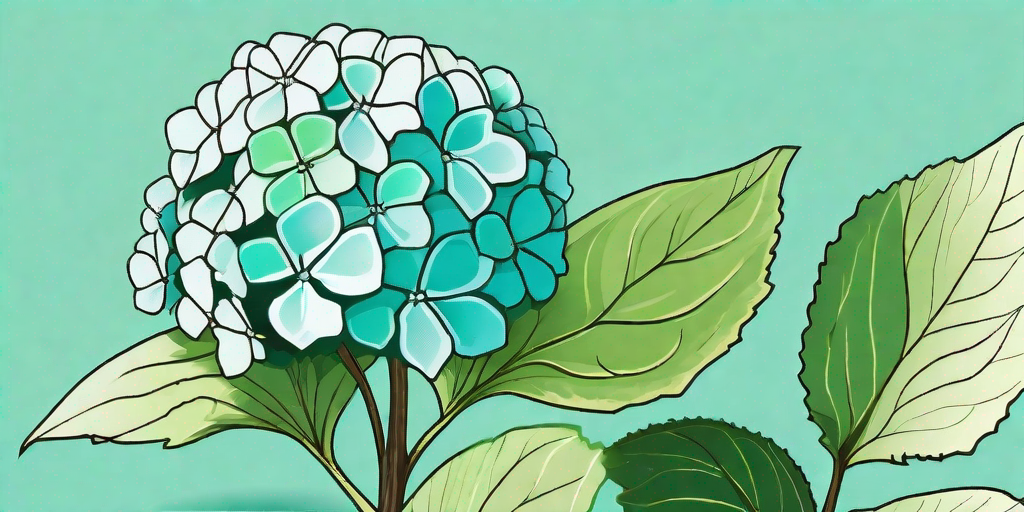
Hydrangeas are the divas of the garden world. They're stunning, they're dramatic, and they're prone to the occasional bout of fungal drama. But don't despair, dear gardener! With a little bit of know-how, you can keep your hydrangeas healthy, happy, and fungus-free. Let's dive into the world of hydrangea fungus and explore how to banish it from your garden for good.
Understanding Hydrangea Fungus
Before we can tackle the problem, we need to understand it. Hydrangea fungus, also known as leaf spot, is a common disease that affects these beautiful plants. It's caused by a variety of fungi that love the damp, humid conditions that hydrangeas also happen to adore. The result? A fungal party on your hydrangeas that you definitely didn't RSVP to.
Leaf spot manifests as unsightly black or brown spots on the leaves of your hydrangeas. Left untreated, it can cause the leaves to yellow and fall off, and in severe cases, it can kill the plant. But fear not! With the right tools and techniques, you can send this unwelcome guest packing.
Identifying Hydrangea Fungus
So, how do you know if your hydrangeas are hosting a fungal fiesta? Look for circular or irregularly shaped spots on the leaves. These spots often have a purple or reddish halo around them. If the spots are numerous and the leaves start to yellow and fall off, you've got a clear case of hydrangea fungus.
It's important to note that not all leaf spots are caused by fungus. Other culprits can include pests, nutrient deficiencies, and even sunburn. So before you declare a fungal outbreak, make sure you've ruled out these other possibilities.
Preventing Hydrangea Fungus
As the old saying goes, an ounce of prevention is worth a pound of cure. This is especially true when it comes to hydrangea fungus. By creating an environment that's inhospitable to fungi, you can prevent an outbreak before it starts.
Firstly, make sure your hydrangeas have plenty of space. Fungi love damp, crowded conditions, so giving your plants room to breathe can help keep them healthy. Secondly, water your hydrangeas at the base, not from above. Wet leaves are a fungus's best friend, so keep them as dry as possible.
Proper Pruning
Pruning your hydrangeas can also help prevent fungal infections. By removing dead or diseased branches, you can improve air circulation and reduce the chances of fungus taking hold. Just make sure to disinfect your pruning shears between cuts to avoid spreading any potential diseases.
When to prune depends on the type of hydrangea you have. Some varieties, like the bigleaf hydrangea, bloom on old wood and should be pruned after flowering. Others, like the panicle hydrangea, bloom on new wood and can be pruned in late winter or early spring.
Treating Hydrangea Fungus
Despite your best efforts, sometimes hydrangea fungus can still strike. But don't worry, it's not the end of the world (or your garden). There are several effective treatments you can use to get your hydrangeas back on track.
The first step is to remove and dispose of any infected leaves. This can help prevent the fungus from spreading to other parts of the plant or to other plants in your garden. Again, make sure to disinfect your pruning shears between cuts.
Fungicides
For more severe infections, you may need to resort to fungicides. There are many different types available, from organic options like neem oil and copper sprays, to synthetic fungicides. The key is to apply them thoroughly and regularly, as per the manufacturer's instructions.
Remember, fungicides are not a cure-all. They're most effective when used in conjunction with good gardening practices like proper spacing, watering, and pruning.
FAQs about Hydrangea Fungus
Can hydrangea fungus spread to other plants?
Yes, hydrangea fungus can spread to other plants, especially if they're closely related species or if they're planted too closely together. That's why it's so important to remove and dispose of infected leaves as soon as you spot them.
Can hydrangea fungus kill my plant?
In severe cases, hydrangea fungus can kill your plant. However, with early detection and proper treatment, most plants can recover from a fungal infection.
How can I prevent hydrangea fungus in the future?
The best way to prevent hydrangea fungus is to create an environment that's inhospitable to fungi. This includes proper spacing, watering at the base of the plant, and regular pruning.
Conclusion
Hydrangea fungus can be a real party pooper, but with a little bit of knowledge and a lot of TLC, you can keep your hydrangeas healthy and happy. Remember, prevention is key, but if an outbreak does occur, there are plenty of effective treatments available. So don't let a little fungus ruin your love affair with these garden divas. With these tips and tricks, you can say goodbye to hydrangea fungus and hello to a healthy, beautiful garden.















